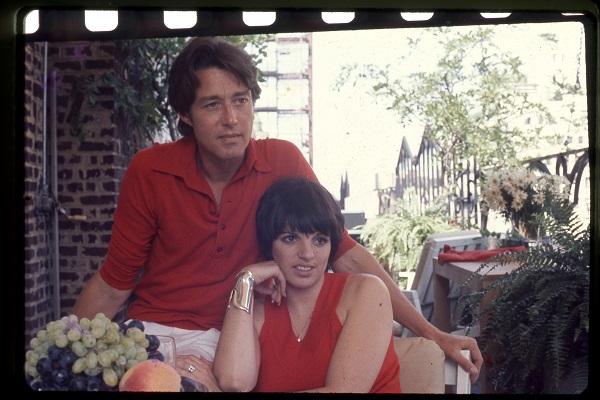Available on DVD Mon 22 Jul 2019.
Fashion designer Roy Halston Frowick cut a swathe through 70s America, clothing the rich and famous of the time such as Liza Minnelli and Bianca Jagger. “His dresses danced on you,” trills Minnelli. He designed his dresses to compliment the women who would wear them rather than drape one size over a homogonous conveyer belt of anglepoise models. Like a Brazilian footballer or numerous popular singers, he became known by a punchy mononymic; Halston.
Frédéric Tcheng is no stranger to the fashion documentary, having worked on Valentino: The Last Emperor and Dior and I. In Halston, he presents a well-researched, if largely uncritical portrait of his subject. However, he makes the baffling decision to frame the story as a detective noir mystery, in which a reporter (Tari Gevinson) pieces together Halston’s life and career. This occasionally provides some choice imagery – a glittery jumpsuit laid out like the chalk outline of a body is a bold visual metaphor that aims well beyond the talking-head format of a standard doc – but is often seemingly forgotten for long periods and then reprised half-heartedly. It’s also not as if any of the contributors, Minnelli and filmmaker Joel Schumacher among them, were reticent in sharing their memories of their friend.
Halston’s story is plenty interesting on its own terms, at least to begin with. For those with an at best fleeting interest in fashion, it’s an accessible introduction to a superficial and rarefied world, populated by colourful characters like Truman Capote and Andy Warhol. These familiar names ease the viewer into the universe inhabited by Halston universe, and his rise from milliner at Bergdorf Goodman’s to the Mount Olympian skyscraper he called an office during his imperious heyday.
For all the added glitter it becomes apparent that this rise-and-fall story is a little more off-the-peg than its subject would care for. It becomes a blizzard of cocaine, tantrums, bad decisions and Faustian bargain. These incidents were documented extensively during Halston’s life, and most of his associates are alive today, which again detracts from the framing noir device that Tcheng employs.
For all the volume of material Tcheng had to draw from, not much comes across about Halston as a person besides his workaholic tendencies and his epicurean appetites fed by his regular attendance at the infamous Studio 54. Much of the archive footage again deals solely with his craft, and it’s a tragedy that the subject of such recent history is absent in person. Sadly, his fate was one distressingly familiar for a gay man of that period and he died in 1990.
Perhaps this nebulous figure that refuses to peek out from behind his garments is the reason for the mystery angle Tcheng aims for, but it leaves the end result feeling both clunky in its approach and unsatisfying in its resolution. It’s a rich snapshot of the times, but an incomplete portrait of the man known simply and monumentally as Halston.
